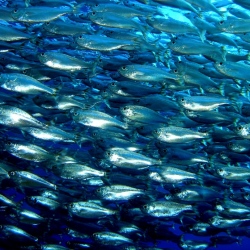
California businessman Russ George made headlines in 2012 when he, in cooperation with a group from a Native Canadian community, dumped more than 100 tons of iron sulfate into the Pacific, some 200 miles off shore. The iron then triggered a bloom of plankton.
He apparently didn’t ask anybody’s permission, violated two United Nations conventions, and was widely condemned for taking on such a large project, a type of geoengineering, to alter the environment as he saw fit. Iron causes blooms of plankton to form because the element is required for the tiny plant-like cells to live, and is usually only present in small quantities at the surface. Places with strong upwelling currents, such as areas off the U.S. West Coast, often have higher levels of iron brought up from the deep ocean, and for that reason often have abundant plankton and sea life.
George’s idea was to create this bloom to both absorb carbon dioxide (the plants need this greenhouse gas to grow) and to provide food for local salmon stocks. After the tiny cells capture carbon dioxide as they’re growing, they eventually sink to the bottom and die, removing the gas from the atmosphere. A new study in the Journal of Plankton Research suggests that the plan may have actually worked better than previously thought to increase the number of crustacean zooplankton upon which young salmon feed. And, in turn, the number of salmon in this area has approximately doubled since 2010.
But it can’t be proved that there is a causal relationship between the iron seeding experiment and the increased numbers of fish. Historically populations of fish have varied for many reasons, some of them unknown. It also isn’t clear how much carbon dioxide the experiment sequestered.
